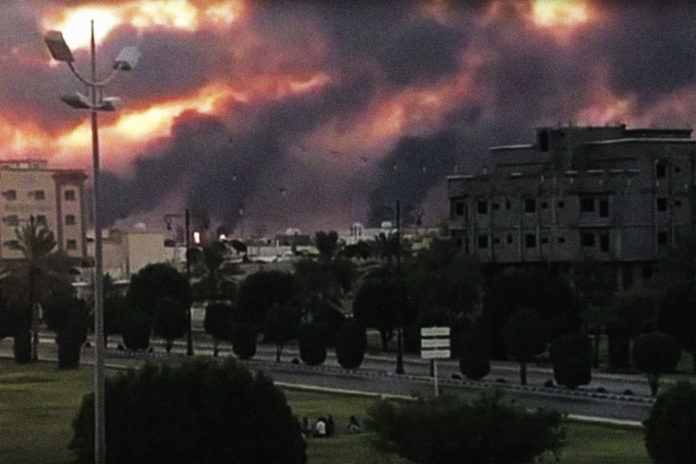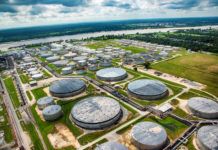
The last decade has completely changed the way most analysts look at energy markets. In the past, and particularly throughout the two decades prior to the shale revolution, geopolitical impacts drove market outcomes. While fundamentals were important, geopolitical events served as important inflection points relative to market trends starting in the early 1970s and continuing until the Arab Spring of 2010.

Geopolitical events have certainly not gone away, but their impacts on global energy supplies and prices have been considerably softened, in very large part due to the U.S. shale revolution. Unconventional development has vaulted U.S. crude oil production to the top of the world leaderboard and, along with Russian supplies, has considerably increased the level and diversity of non-OPEC (and non-Middle Eastern) energy supplies around the globe.
Without a doubt, the increase in non-OPEC supply diversity is one of the reasons why the importance of these geopolitical events, and the resulting price volatility that usually follows, have diminished. However, geopolitical events occurring over the past summer and fall of this year reminds markets that the Middle East is still an important part of world energy markets, regardless of the shale revolution.
On September 14, 2019, Houthi rebels in Yemen are believed to have launched coordinated drone attacks against neighboring Saudi Arabia, directly into the heart of its Abquiq and Khurais oil fields. These fields—collectively accounting for 5 million barrels per day (“MMBBls/d”) of production, and the important oil field equipment that processes the lower quality crude oil produced in that region into a more suitable intermediate crude oil grade for western refining—were immediately damaged.
This event, followed closely behind summer maritime tensions in the Straits of Hormuz—over which 21% of the world’s petroleum liquids consumption flows—re-energized concerns about how geopolitics, energy supplies, energy prices, and economics interact.
While energy markets responded quickly and meaningfully to the attack on Saudi Arabian production, this market reaction ultimately proved to be short-lived. International oil spot prices (Brent exchange) surged on the day of the event, increasing by 20%, or $12 per barrel (“Bbl”). But futures prices, reflecting trades contracted for closure 12 months later, only increased by about $4.50/Bbl, or 8%. This pricing outcome suggests that markets were banking that the longer-run impact of the attacks would not be that deleterious to world energy supplies.
Three days after the event, spot prices had fallen to around $4/Bbl to $5/Bbl above pre-attack prices. The increase in 12-month futures prices was down to just 3%, indicating that the markets were doubling down on the belief that there would be no significant long run impacts. The market’s optimism was proven correct on October 3, 2019, when the Saudis reported that 100% of all production damaged by the earlier attacks was back online.
So what does this all mean for energy markets?
First, keep in mind that energy markets were already softening prior to the attacks on the Saudis and that softness will likely remain unchanged as 2019 ends. Most traders see a well-supplied energy market, relative to current (and anticipated) demand levels. This sentiment helps to assure prices will likely not spike, or are less likely to spike, should any kind of “proportional” geopolitical response to the attacks on Saudi Arabia arise between now and the end of the year.
Second, U.S.-China trade concerns continue to dominate the financial press, the C-suites, and investment: The Saudi attack, while important, has clearly proven to be an inconvenient and temporary distraction. Sino-American trade concerns are not going away since it seems highly unlikely that a trade deal can be reached in the current political environment.
The longer this impasse proceeds, the slower the economic growth in China and Europe, and ultimately the U.S. Uncertainty, coupled with slower economic growth, does not bode well for capital formation or, more importantly, the capital formation that has arisen to support these burgeoning trade opportunities over the past decade.
U.S.-China trade intransigence has considerable implications for south Louisiana. Slower world growth means slower export opportunities relative to the new petrochemical production capacity that has been developed over the past eight years. While exports, in the absolute, are only slightly off prior levels, they are considerably off relative to the original capacity investments that were made to support a much higher level of trade.
Slowing economic activity, resulting from the existing U.S.-China trade tensions, will lower the profitability of the recently completed capacity investments which, in turn, will likely chill those companies’ decisions to make additional capacity (capital) investments in the near term. Excess petrochemical production capacity is starting to arise worldwide, which does not bode well for any new capacity-oriented investment in Louisiana.
The other bulwark of capital formation in the south Louisiana economy is natural gas liquefaction facilities. The story for this industry is the same if not more pronounced than it is for petrochemicals.
Most industry forecasts see this industry remaining in a capacity glut at least until the 2021 to 2022 time period and potentially longer. For many natural gas export developers, contract durations are becoming shorter and shorter, the willingness to enter into contracts with higher risk counterparties is increasing, and contracted quantities are getting smaller and smaller. In other words, it’s a buyer’s market and that is not likely to change soon.
Continued slower economic growth means slower energy demand, and slower energy demand means slower south Louisiana natural gas export opportunities. While geopolitical events have not particularly impacted these trends, they certainly are not helping either.
David E. Dismukes is a professor and the executive director of the Center for Energy Studies at LSU. He holds a joint academic appointment in the department of environmental sciences where he regularly teaches a course on energy and the environment.








